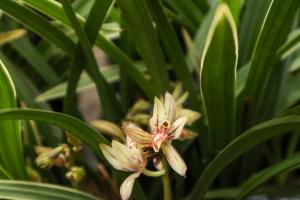Introduction
Water is an essential resource for both plants and human beings, and its purity is vital for the survival of all living beings on the planet. Due to human activities, many water sources have become contaminated, and this has a significant impact on plant diversity. In this article, we will explore how contaminated or purified water affects plant biodiversity.
Contaminated Water and Plant Biodiversity
Contaminated water can have a severe impact on plant biodiversity. High levels of toxins in water can lead to reduced growth rates, deformities, and even death for plants. Pesticides and fertilizers that run off from agricultural lands into water bodies are among the major pollutants that affect plant diversity. Such chemicals can kill both aquatic plants and animals or cause a shift in the ecosystem dynamics which would have a significant negative impact on plant diversity.
The Impact of Heavy Metals on Plants
Heavy metals are among the most prevalent pollutants in water, with disastrous effects on plant biodiversity. Exposure to heavy metals such as lead, cadmium, and mercury can lead to physiological and biochemical changes in plants, which would eventually lead to a decrease in biodiversity. The changes in cellular respiration, photosynthesis, and nutrient uptake that result from heavy metal toxicity have significant consequences for the survival of plant life.
How Purified Water Enhances Plant Biodiversity
Purifying water can have a positive impact on plant biodiversity. Purification such as filtration and treatment of water can eliminate pollutants and restore a healthy balance of nutrients that are critical for plant growth. The restoration of pure water in areas where plant life is adversely affected by contaminated water is a potent tool to reverse the negative effect of contamination and restore plant biodiversity.
Conclusion
The importance of water purity for plant biodiversity cannot be overemphasized. Contaminated water poses a significant threat to the survival of plants, alters ecosystems dynamics, and limits biodiversity. Purified water, through various processing methods, can enhance the growth and survival of plants, thereby amplifying plant biodiversity. Therefore, efforts to protect and restore water quality must be intensified as this would result in a healthier ecosystem, richer biodiversity, and a sustainable planet for all living beings to thrive.

 how many times do yo...
how many times do yo... how many planted tre...
how many planted tre... how many pine trees ...
how many pine trees ... how many pecan trees...
how many pecan trees... how many plants comp...
how many plants comp... how many plants can ...
how many plants can ... how many plants and ...
how many plants and ... how many pepper plan...
how many pepper plan...
































